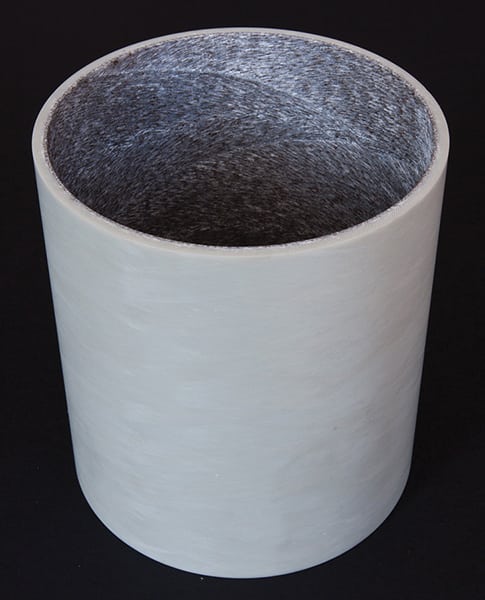Robust Bearings Tested for Brazil's Belo Monte Hydro Project
Brazil’s Belo Monte hydropower project includes a complex of dams, numerous dikes, and a series of canals supplying two different power stations with water. With a rated capacity of 11,233 MW, it will be the country’s second-largest and the world’s third-largest hydropower generating station behind China’s Three Gorges and Brazil’s Itaipu installations.
Project owners wanted a reliable, water- and debris-resistant material that would allow extended service for the facility’s wicket gates. The components needed to withstand the harsh 24-hour operating conditions at the dam and provide a minimum service life of 20 years.
As part of the search process, Norte Energia—the company formed to build and operate the Belo Monte hydroelectric plant—tested GGB Bearing Technology’s HPM self-lubricating, filament-wound bearings (Figure 1) to determine their suitability for the wicket gate application. The materials used in the bearings were specifically developed for hydropower applications and offer resistance to impact and corrosion, high static and dynamic load capacity, and 75% less weight than equivalently sized metallic bearings.
Powertech Labs conducted the testing in accordance with U.S. Army Corps of Engineers specifications. The testing simulated actual operating conditions at Belo Monte, including the use of water from the Xingu River, where the project is being constructed. The bearings were subjected to tests that were modified to simulate 30 years of operation rather than the standard 13 years.
The bearings—consisting of a fiberglass-reinforced, epoxy resin support layer and a sliding layer of polyester fibers with polytetrafluoroethylene and other additives—were first subjected to a static load with rotary and oscillating motion under both dry and wet conditions. They then underwent accelerated wear testing with a dynamic radial load on a journal moving continuously plus or minus one degree. The static load remained constant, but the dynamic load was paused every 15 minutes to simulate a turbine wicket gate opening plus or minus 15 degrees.
The bearings performed well with little evidence of operating stress. Significantly, it was demonstrated that their coefficient of friction and wear rate decreased as running time increased, which allowed the project engineers to design the turbines with smaller servomotors. Engineers now use the essential data provided from the testing when specifying self-lubricating bearings in hydropower turbines to achieve longer service life and maintenance-free operation.
GGB HPM bearings are used in more than 25 hydropower projects worldwide, including on the largest water turbine in the world at the Chinese Xiangjiaba hydropower plant. That Three Gorges Corp. project contains four Francis turbines, each with a rated capacity of 850 MW, which were fitted with bearings with an inner diameter of 520 mm and a length of 370 mm. ■
—Edited by Aaron Larson, a POWER associate editor (@AaronL_Power, @POWERmagazine).
